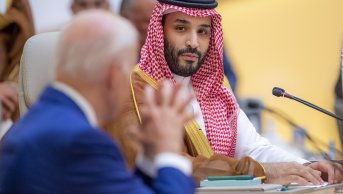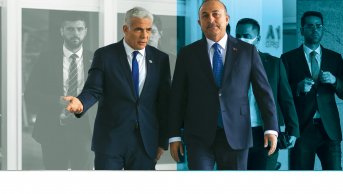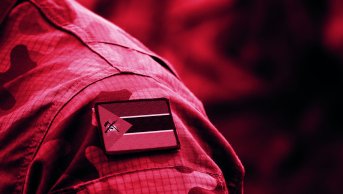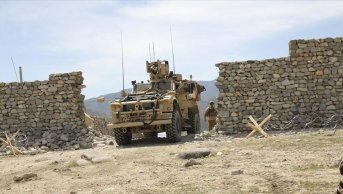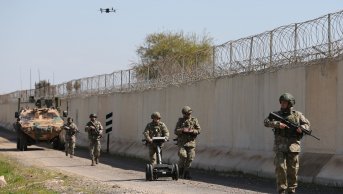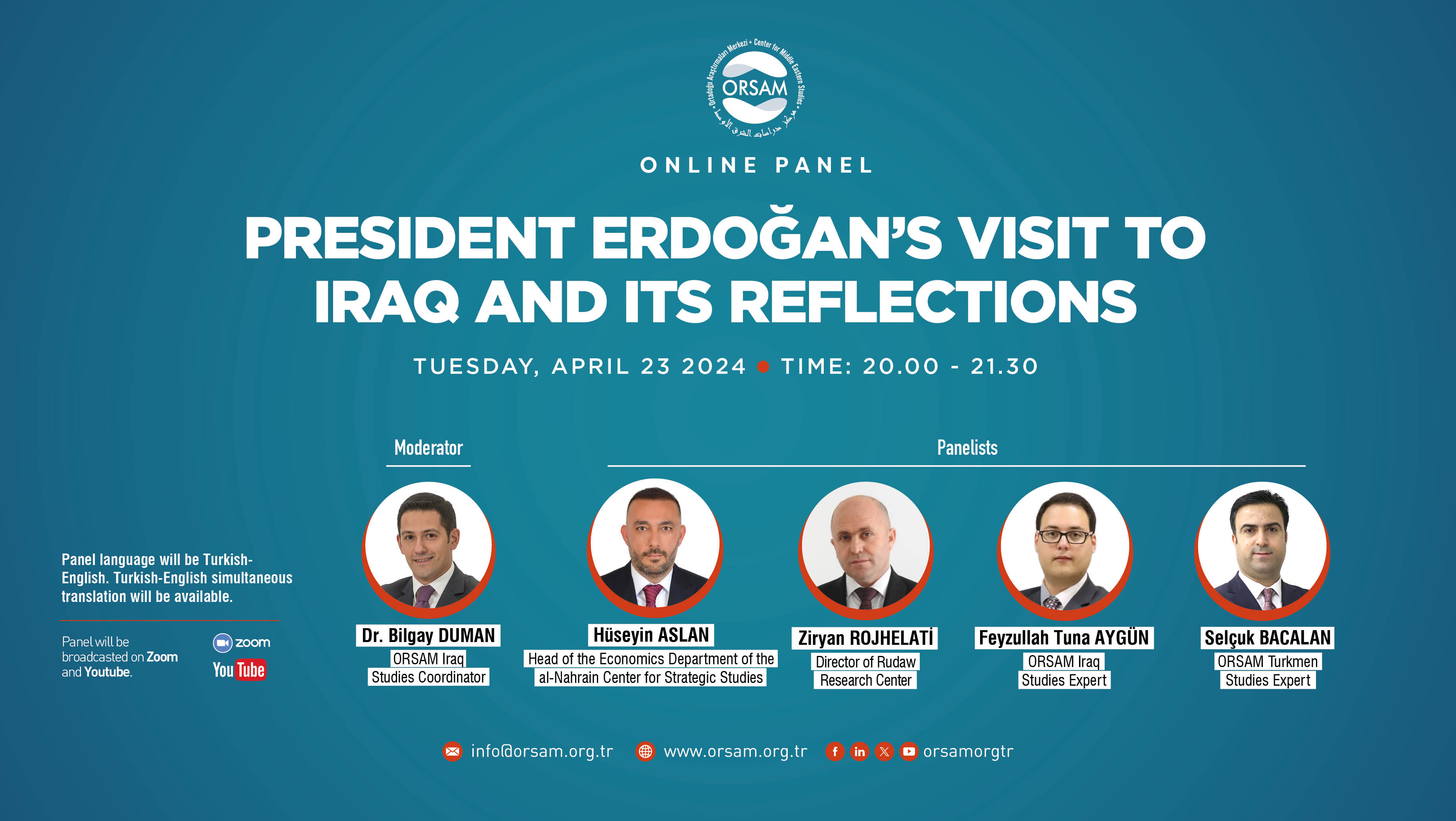Making Sense of the Assassination of Abu Muhammad al-Masri in Tehran and Iran’s Multidimensional Proxy Strategy
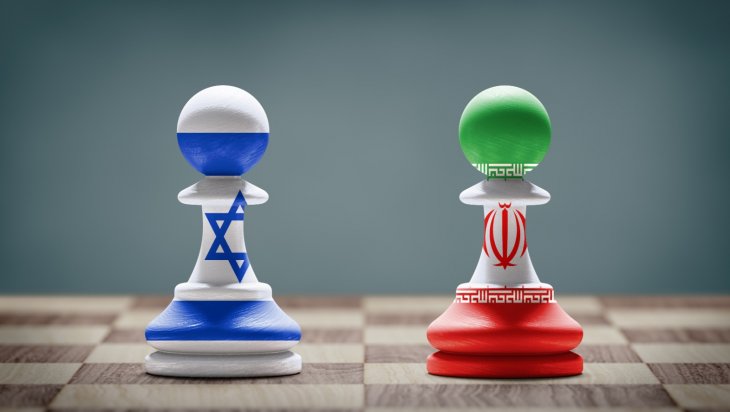
When it was revealed that Abdullah Ahmed Abdullah, aka “Abu Muhammad al-Masri,” thought to be the second-highest ranking leader of Al-Qaeda, was assassinated in Iran on August 7, 2020, Tehran categorically denied it and gave a false color to the incident by sharing different names for the victims of the targeted attack. According to the semi-official Mehr news agency the victims were Habib Daoud, a Lebanese history professor, and his daughter Maryam, as also confirmed by Iranian Revolutionary Guards-affiliated Lebanese MTV channel. However, Habib Daoud turned out to be a cover name for al-Masri, used by Iranian officers. According to U.S. Intelligence, al-Masri had been in custody in Iran and was released and lived under tight surveillance in Tehran-Pasdaran under the surveillance of the Revolutionary Guards, this being in return for a deal urging the release of the Iranian diplomats previously abducted by Al-Qaeda in Yemen.
Al-Masri was also thought to have served as head of the Al-Qaeda operations division and was accused of masterminding the terrorist attacks which targeted the US embassies in Nairobi and Dar as-Salam on August 7, 1998. These were the two milestone attacks that were within the context of the emergence of the “brand” and also highlighted its global reach. As a result of the simultaneous attacks carried out by two trucks entering the US diplomatic missions in both countries, 223 people died and about 4,000 civilians were injured.
After al-Masri was gunned down, eyes were fixed on the Israeli Intelligence, Mossad, whose responsibility in the event was questioned based on previous similar activities in Iran. It would not be unrealistic to argue that Israel’s role was critical, such as in staged sabotage activities against critical infrastructures including the Natanz Nuclear Facility on 25 June 2020.
The huge explosion in a supposedly Hezbollah-related depot in the Beirut port and the world’s attention turning towards Lebanon and the al-Masri case did not become a main topic in the international media until Adam Goldman’s article was published in the New York Times, on November 14, 2020. This article by Goldman reasserted the al-Masri killing in Tehran’s suburbs and Mossad’s role in the incident. This time, the assassination came to the forefront as the international media seemed obviously more interested than before. It is also noteworthy that Goldman’s article, along with given international media support, came after the electoral victory of Joe Biden in United States. Joe Biden recently called for returning to the 2015 Joint Comprehensive Plan of Action (JCPOA), with some amendments, between world powers and Iran.
Considering that coming to the table with Iran is also an issue which Israel harshly opposes, the al-Masri assassination might come both as a message to the U.S. administration with respect to its approach (and a possible change in it after the presidential election) towards the JCPOA and an act to highlight Iran’s affiliation with al-Qaeda. Israel could thereby improve its moral high ground against its “most dangerous adversary” in the region as well as justify its sabotage activities against facilities within Iran and strikes on Iran-backed groups all over the Middle East.
It could thus be argued that, before Biden would take any concrete action with respect to the JCPOA, in order to deepen the Trump administration’s commitment towards the subject, Israel took a strategically devised step in that direction. The assassination of Mohsen Fakhrizadeh, again in Tehran, on September 27, who was the driving force behind and a key scientist with respect to Iran’s nuclear program, further reflected Israel’s adamance and her stance against any intention to return to the JCPOA. Fakhrizadeh’s assassination can be interpreted as if Israel could not succeed in getting the above-mentioned result and the Biden administration would set the table again. At least an Israeli move would significantly damage Iran’s capability towards nuclear proliferation. On the other hand, the Iranian Guardian Council’s ratification of the legislation by the parliament to increase nuclear activities, while weakening Biden’s hand to return to the table, proves to be a daring response to the Israeli move and a clear message about the continuing and even deeper desire towards nuclear goals.
Iran’s Sunni Strategy within the Context of Tehran’s Proxy Warfare
According to the Velayat-e Faqih Doctrine established by Ayatollah Khomeini, the mandate of the spiritual leader extends not only to Shia Muslims but also all the Islamic Ummah. Moreover, as indicated in its constitution, Iran undertakes a mission, which is saving and mobilizing all the Muslims “suffering under the oppression of cruel governments.” Khomeini claimed that the “Iranian Islamic Republic is in a war against infidels” and called all the Muslims to join this war against them. These arguments and assertations can be considered as propaganda for Iran’s struggle to be the leader of Ummah. By doing so, the Iranian regime has long tried to portray itself as the protector of various groups regardless of their sectarian affiliation and as the most vocal voice in the Muslim world. Nevertheless, Iranian-backed groups’ reported human rights violations in Sunni majority conflict areas as well as the country’s own particular foreign policy choices as in the case of the Karabakh crisis, contradict this unifying messaging effort and has long raised questions about the regime’s real intentions. Still, in order to strengthen this message and as a tool for sustaining regional influence, the country occasionally also supported Sunni non-state groups, including the Taliban, Hamas, and Palestinian Islamic Jihad.
Hence, as Alex Vatanka also indicated, in line with her realpolitik approach, Iran has provided various types of support to every organization that serves the country’s regional ambitions, irrespective of their ideology or sect, that might have the potential and be willing to contribute to the so-called “Axis of Resistance” in the Middle East. The relations between Iran and Sunni organizations such as Hamas, Palestinian Islamic Jihad as well as the Taliban is a clear indication of such a tendency. Not only does such an effort provide Iran with a discourse the country strived for devising in its constitution as mentioned previously, it also supplies a strategic advantage. This strategic advantage exists because, when the proxy networks are composed of a combination of Shia and Sunni groups, they become highly challenging targets to detect, intercept, infiltrate and eliminate for the adversaries’ security apparatus.
Keeping both sectarian and ideological differences between Iran and Al-Qaeda in mind, one may find it surprising that Iran could be a safe haven for an Al-Qaeda leader. However, this perception is misleading considering Tehran’s strategy to instrumentalize any relation with groups that might have potential to contribute to her national security. Furthermore, Iran should never be expected to miss an opportunity to strengthen its position in accordance with her proxy warfare and network strategy. Regardless of the fact that, whether current developments on the al-Masri assassination serve as a well-timed perception management or information warfare operation targeting Tehran, establishing or maintaining relations with Sunni states and non-state actors in the region is indeed a non-separable part within the scope of Iran’s proxy strategy.
Relations with Sunni Groups as the Pragmatic Feature of Iran’s Regional Game
When the Taliban increased its influence in Afghanistan during late 1990s and killed 9 Iranian diplomats in Mazar-e Sharif in 1998, Iranian ground forces were mobilized along her borders with Afghanistan. However, Tehran currently does not hesitate to support the Taliban in Afghanistan whom she once considered “as a pawn of the U.S. and Pakistan,” threatening her eastern borders in the late 1990s. In addition, other Sunni groups such as Hamas, Palestinian Islamic Jihad (PIJ) and The Popular Front for the Liberation of Palestine – General Command (PFLP-GC) are supported by and work closely with Iran. The increased activism of Hamas, especially in the early 1990s, as a response to Arab-Israeli Peace Process, resulted in Iran’s support for this group. It is important to note that Hamas procures the missiles that play a key role in its attacks against Israel from Iran, though sectarian tension represents constraints in the relations, as in the case of Hamas’ stance against regime violence in Sunni populated areas during the Syrian civil war, Tehran cut her support to this organization in its struggle against Israel after 2014 (Iran increased her support to PFLP-GC in this period). Iran preferred to maintain the transfer of missile technology and arms to Hamas even before the relations were completely repaired in 2017. On 28th August 2017, Yahya Sinwar the current Palestinian leader of Hamas in the Gaza Strip publicly said, “Today, the relationship with Iran is excellent, or very excellent…the Islamic Republic is the largest backer financially and militarily to Hamas’ military wing.” Moreover, a week after the Qassem Soleimani assassination in Baghdad Airport on January 3rd, 2020, the commander of Iran’s Islamic Revolutionary Guard Corps (IRGC) Aerospace Force, Brig. Gen. Amir Ali Hajizadeh, commented on the Iranian retaliatory missile attacks on Irbil and al-Asad Bases hosting U.S. troops in Iraq. During his speech, nine flags were used as a backdrop, including Shia groups and Hamas, revealing its involvement in the so called “Axis.”
PIJ, on the other hand, had always opposed a peace process and it has never had a sectarian tension with Iran. This group has not only received funding and training support from Iran but has also taken part in joint operations with Hezbollah, which is the key proxy of Tehran in the region. PFLP-GC, on the other hand, a Sunni dominated secular organization, and Al-Aqsa Martyrs Brigade have long been supported by Iran, despite ideological differences, in order to increase pressure on Israel. PFLP-GC’s support to the Syrian regime along with Iran has become effective in keeping the regime in power and regaining the territories that have been lost for years. According to the U.S. State Department, Tehran’s support to 3 Palestinian Groups, Hamas, PFLP-GC and the PIJ amounts to 100 million dollars. The Al-Aqsa Martyrs Brigade, a relatively small group, is also supported, in accordance with its size, by Iran through Hezbollah.
The relation of Iran with Hamas and PFLP-GC within the context of the Syrian civil war and the changing positions of these actors toward the Syrian regime indicates that Tehran exploits Sunni groups effectively. This is also the case with Shia groups, based on the balance in the field, regardless of their ideological and sectarian differences.
According to the Soufan Center’s report, since the September 11 attacks, Al-Qaeda members, such as al-Masri, took refuge and were permitted to transit through Iran. Tehran believes that she can exert leverage through harboring members of such organizations and establish influence over them. Moreover, as indicative in the case of the Taliban, Iran can keep her borders and interests in her periphery safe through these sophisticated relational networks. Thus, it can be said that relations between Iran and Al-Qaeda are situational and it is as valid for the PKK’s Iran offshoot, the PJAK. They clash with each other while they can also cooperate in different areas of interest.
Overall, despite the fact that Iran’s proxy strategy turned out to be far more applicable in Shi’a dominated countries and areas, considering the outcomes, and Tehran managed to establish better networks with Shi’a groups, Iran has hitherto been quite pragmatic in terms of her relations with Sunni groups in the region. Even with the hostile ones, Iran has been pragmatic in relations with them as a way of deepening its proxy warfare capabilities and keeping the regional conflicts outside the country’s borders.
Consequently, Al-Masri’s residence in Tehran should not come as a surprise within the context of Iran’s unique proxy and network strategy and it is highly probable if not certain, that Iran will sustain her close contact with such groups over which she can use her leverage and through which it can raise its regional profile and keep the fight out of the country. Nevertheless, this strategy seems to have been working in the opposite direction for some time and further jeopardizes Iranian security and the security of its high-level cadres both inside and outside of the country. This is a situation which would need to be closely monitored especially under the light of Biden administration’s anticipated changes in the US policy, not only towards Iran but also towards the whole region.

